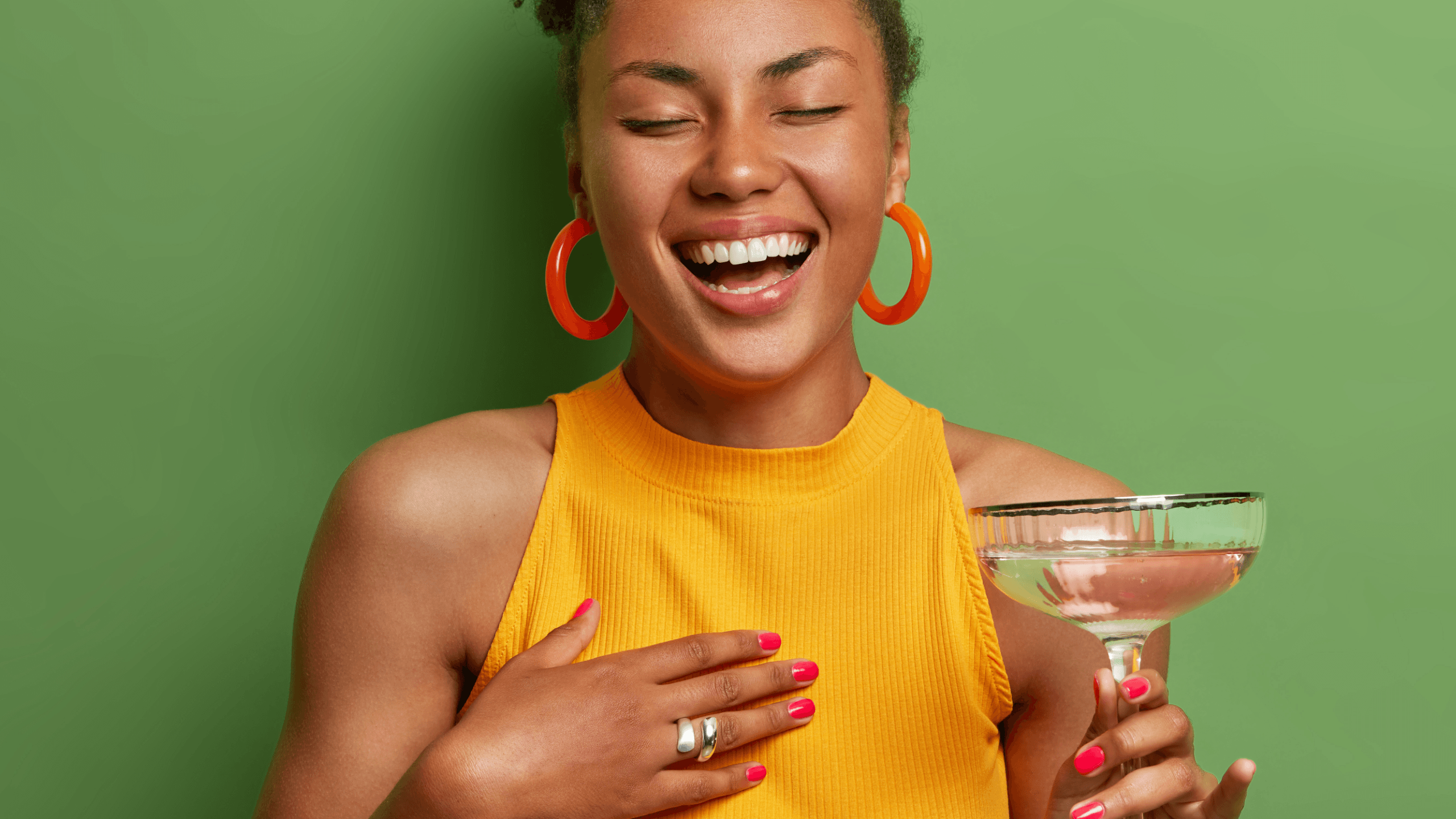Alcohol doesn’t cause rosacea.That’s a myth. But for many Americans, the cultural association between alcohol and rosacea was cemented by 20th century actor and comedian W.C. Fields. Fields was famous for playing characters who drank a lot. He also had rosacea and rhinophyma—a red, bulbous nose. Field’s fame solidified a stereotype that people with rosacea face to this day: that rosacea is caused by heavy drinking.
Alcohol Doesn’t Cause Rosacea — But It Does Trigger It
The exact cause of rosacea remains unknown; however, researchers believe genetics, skin mites, and an unbalanced skin microbiome could all contribute to the onset of the skin condition.
Key rosacea triggers include heat, sunlight, and environmental stress.
Alcohol is a common trigger, too. One survey by the National Rosacea Society found that one alcoholic drink can trigger rosacea symptoms in two thirds of people with the skin condition. Because alcohol dilates your blood vessels, drinking can contribute to the flushing associated with rosacea.
A 2017 study from Journal of the American Academy of Dermatology indicated that drinking can increase women’s risk of developing rosacea, but also noted there’s not enough research to say that alcohol causes the skin condition.
Best Practices for Drinking Alcohol with Rosacea
While cutting out alcohol may help improve symptoms, having rosacea doesn’t mean you need to forego your favorite alcoholic beverages completely. Cutting out alcohol for good may help improve symptoms. If you want to enjoy an occasional cocktail, help keep flares at bay by:
Drinking Chilled Water Between Drinks
Drinking water before, during, and after drinking alcoholic beverages will help you stay hydrated. Alcohol is dehydrating and can also push your body into a more acidic state, which may increase inflammation. Consider drinking chilled water so you can stay cool and help your body avoid overheating, which can trigger flares.
Choosing Your Alcohol Wisely
Not all alcohol has the same effect on your skin. One survey by the National Rosacea Society found that 76% of people with facial redness experience flare-ups from red wine, 56% from white wine, 41% from beer, 33% from champagne, 33% from vodka, 28% from tequila, 24% from bourbon, gin, and rum, and 21% from scotch.
Keeping this data in mind may be helpful when choosing a more skin-friendly alcoholic beverage. Everyone responds differently to possible triggers, so find what works best for you! There is no one-size-fits all best alcohol for rosacea-prone skin.
Drinking Your Cocktail Slowly
By drinking slowly, you’ll not only consume less alcohol, you’ll also be more aware of when you’ve reached your “trigger threshold.” Drinking mindfully will help you prevent overdoing it. It may be beneficial to journal how many drinks you’ve consumed, what type of alcohol you’ve drank, and the severity of your symptoms to help you determine your limits.
Ordering Your Alcohol on the Rocks
Just like drinking chilled water may help cool off your body and keep flares to a minimum, ordering your alcohol on the rocks may help minimize symptoms. Chilled beverages create less blood vessel dilation, even compared to room-temperature drinks.
For Those with Facial Redness, Moderation Is the Key
You can’t develop rosacea from alcohol consumption; however, altering your drinking habits may help prevent flare-ups. According to the National Rosacea Society, almost nine in 10 people with rosacea say they limit their consumption of alcohol because of the skin condition. Ninety percent of those people say limiting their alcohol consumption has reduced flare-ups.
Prone to Facial Redness? Consider Gladskin
The skin microbiome can play a role in facial redness. Gladskin's Redness Relief Cream contains Micreobalance®, our patented enzyme that restores bacterial balance to the skin microbiome. Learn more.
Source:
Survey by the National Rosacea Society, Barrington, Ill. John E. Wolf Jr., chairman of dermatology, Baylor College of Medicine, Houston. Diane Thiboutot, MD, associate professor of dermatology, Penn State Milton S. Hershey Medical Center, Hershey, Pa.
